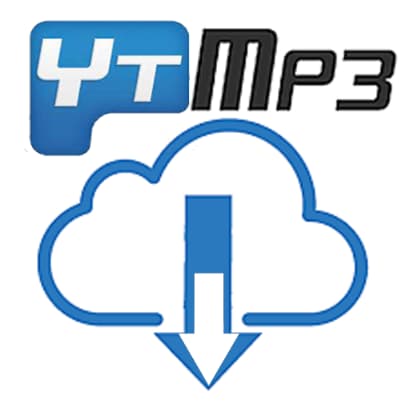Managing IT assets effectively is critical for organizations to optimize costs, reduce risks, and drive efficiency. From hardware and software to contracts and licenses, IT assets encompass a wide range of items that enable enterprises to function smoothly.
However, without a proper IT Asset Management (ITAM) strategy and solution in place, organizations struggle with asset visibility, compliance issues, and suboptimal spending.
Best Open Source IT Asset Management Software USA 2023

This is where open source ITAM software comes into play.
In this expansive guide, we will cover:
- What is IT Asset Management (ITAM) and why it matters?
- Benefits of implementing an ITAM software.
- Types of assets managed by ITAM solutions.
- Key features to look for in ITAM tools.
- List of top open source options for 2023.
- Considerations when selecting an open source ITAM platform.
- Implementation tips to ensure a successful rollout.
Equipped with this wealth of information, you will be able to make an informed decision about the best open source ITAM software for your specific organizational needs and strategic objectives. Let’s get started!
What is IT Asset Management and Why Does it Matter?
IT Asset Management refers to the process of tracking and managing the lifecycle of all IT hardware and software assets across an organization. This encompasses everything from purchase and installation to upgrades, maintenance, and eventual retirement of assets.
Effective ITAM delivers numerous advantages such as:
- Optimized Costs
By maintaining accurate inventory records and usage/performance analytics, ITAM solutions help identify redundant, underutilized or outdated assets to eliminate unnecessary expenses. They also facilitate better vendor contract negotiations.
- Enhanced Security
With robust tracking and monitoring, assets staying beyond their useful life or falling out of support can be easily spotted and replaced, reducing cyber risk exposure.
- Improved Compliance
ITAM tools provide software license management, policy enforcement, and detailed audit reporting to avoid non-compliance penalties.
- Increased Productivity
With a centralized database of all IT assets, resources can be effectively allocated, staff downtimes are minimized, and asset dependencies can be mapped to streamline operations.
- Strategic Decision-Making
Insights from ITAM solutions guide important business decisions around refresh cycles, technology investments, resource allocation, and IT roadmaps for the future.
- Risk Mitigation
By identifying critical assets and fortifying their security and availability, risk exposure can be minimized across functions. Retirement of outdated devices also limits vulnerabilities.
Clearly, holistic visibility and control over IT infrastructure enabled by ITAM translates directly into hard cost savings, productivity gains, and revenue growth.
Types of Assets Supported by ITAM Tools ITAM software solutions cater to a wide spectrum of assets. Here are some common examples:
| Asset Type | Examples |
|---|---|
| Hardware | Servers, computers, laptops, tablets, printers, scanners, routers, switches, sensors |
| Software | Office suites, ERPs, CRMs, business intelligence tools, antivirus, operating systems, databases, custom applications |
| Services | Cloud platforms, web/email hosting, backup, domain registration, technical support, maintenance contracts |
| Licenses | OEM licenses, volume licenses, subscriptions, SaaS logins, software keys, product IDs, entitlements |
| People | Internal staff, external consultants, support vendors, maintenance technicians |
| Data | Documents, databases, archives, configuration files |
| Facilities | Offices, labs, data centers |
This list covers both IT and non-IT assets – indicating the versatility of these tools. Based on your infrastructure stack and business needs, the capability to handle relevant asset categories is a key evaluation parameter when choosing an ITAM solution.
Now let’s explore the important features and functionalities delivered by ITAM software platforms.
Key Features and Capabilities of IT Asset Management Software
ITAM solutions share common components and architecture that empower organizations to take control of their assets. Here are the pivotal functions and tools ITAM platforms provide:
1. Discovery and Inventory Management
The starting point of asset control is identifying what exists in your environment. Automated discovery utilizing agents, scanners, and APIs tracks assets across on-premise, cloud, and hybrid infrastructure. Detailed information like device types, configurations, ownership, and network locations aids the creation of a CMDB (configuration management database). Inventory capabilities take periodic snapshots of connected devices. Integrations with procurement data and manual asset entries preserve accuracy.
2. Lifecycle Tracking
Once assets enter the ecosystem, ITAM software monitors every stage – from deployment, changes, and maintenance to transfers, retirement, and replacements. Capturing rich contextual data (cost, contracts, performance, etc.) in a central repository enables both operational and strategic decision-making.
3. Software License Optimization
Tracking license types, copies owned, installations, usage levels, and other metrics is essential for organizations to avoid overbuying and compliance violations. ITAM tools reconcile purchased vs. consumed entitlements and provide actionable suggestions around reallocating unused licenses or eliminating shelfware.
4. Financial Management
The business impact of IT assets becomes clearer with cost tracking and depreciation values maintained over time. This visibility guides purchase planning, cloud migrations, and other transformational initiatives ITAM tools calculate total cost of ownership (TCO) and return on investment (ROI) for assets while managing processes like requisitions, invoices, budget allocations, and vendor payments.
5. Contract Management
ITAM software centralizes details around support, maintenance, and licensing contracts to monitor validity periods, SLAs, and dues. Alerts notify teams of renewals and expiries to leverage favorable terms and prevent lapses. Contracts get linked to corresponding assets for quicker processing.
6. Resource Utilization
Tracking hardware specifications and software installations against actual usage helps identify opportunities to optimize or redistribute assets to where they are needed most. With data about redundancies, wait times, and shared resources mapped to business entities, ITAM solutions generate action plans for efficiency.
7. IT Service Integration
Seamless integration with ITSM tools like ServiceNow allows teams to tap into the asset repository for improved incident, problem, change, and configuration management. Analyzing relationships between assets, business services, and employees reveals impact and risk.
8. Security Management
ITAM platforms provide visibility into vulnerabilities, threats, exposures, and event data related to managed assets. Risk scores based on firmware versions, updates, etc. help prioritize patching and hardening efforts for enhanced security posture. Integration with data protection tools is also common.
9. Reporting and Analytics
Custom reports and interactive dashboards provide operational KPI monitoring as well as insights around TCO, utilization, uptime/downtime, depreciation, cost savings from retiring assets, etc. Senior leaders can track metrics aligned to business goals.
10. Mobile Access
Modern ITAM tools have native apps or mobile-optimized web interfaces for anywhere access. Field resources can manage assets, licenses, contracts, etc. on the go. Scan barcodes, update device locations, or look up inventory. Such capabilities boost productivity.
These extensive capabilities handle the various facets of asset management – enabling smarter planning, cost optimization, and risk reduction across IT environments and business units. Understanding them clearly is key to evaluating solutions.
Top Open Source IT Asset Management Software [2023 Updated List] Open source ITAM platforms offer a budget-friendly route to get started with asset management, with the option to customize as organizational needs evolve.
They provide comprehensive capabilities minus the expensive licensing typical for commercial tools. Many organizations leverage open-source options successfully.
Here are the top open-source ITAM software recommended for 2023 deployments:
| Software | ** Pros** | Cons |
|---|---|---|
| GLPI | Intuitive web interface Easy discovery and inventory Historical tracking Detailed custom fields | Limited mobile experience Steep learning curve |
| Open-AudIT | Network auditing REST API integration Multi-tenancy Financial tracking | Basic reporting Lack of updates |
| Ralph | The asset management or DCIM Minimalistic yet powerful Unique UI/UX | Cryptic terminology Confusing workflows |
| Snipe-IT | Simple and elegant interface Built-in barcode support Active community | Few out-of-the-box reports |
| inBench | Hardware and software tracking Contract and license management | Clunky interface Discontinued after v5 |
| OCS Inventory | Smooth integration with GLPI User-friendly interface | Setup needs tweaking Limited features |
| Asset Management Light | Lightweight and fast Easy to configure | Very basic Not frequently updated |
Let’s briefly review the pros and cons of each for easy comparison.
1: GLPI
GLPI (Gestionnaire Libre de Parc Informatique) is a widely used open source ITAM platform with rich functionalities delivered through an intuitive browser-based interface:
- Comprehensive network discovery mechanisms automatically map assets and configurations.
- Flexible architecture allows tracking of diverse asset categories and custom fields.
- In-depth history and timeline for each asset aid audibility.
- Integrates well with third-party tools like antivirus software, MDM solutions, and service desks.
- Useful functional plugins extend capabilities around contracts, licenses, barcodes, etc.
The downsides to note are:
- Mobile experience is weaker compared to desktop.
- Steep learning curve to extract full value.
2: Open-AudIT
If auditing and operational visibility are key priorities, Open-AudIT is an open-source ITAM tool worth evaluating.
- Automated network discovery for in-depth inventory capabilities.
- Integration with monitoring tools via RESTful APIs.
- Built-in redundancy with high availability mode.
- Financial management functionalities like depreciation.
- Multi-tenant ready architecture.
Shortcomings include:
- Basic operational and executive reporting.
- Not frequently updated or maintained.
3: Ralph
Ralph simplifies asset management for data center and infrastructure teams with capabilities tailored to their specialized environment.
- DCIM focused feature set around space, power, networks, and interconnections.
- Unique conceptual framework and UI delivering simplicity.
- REST API allows integration with existing tools like monitoring and CMDB.
- Minimalistic yet powerful approach.
- Active user community for guidance and customization tips.
Aspects requiring improvement:
- Use of cryptic terminology with a steep learning curve
- Process workflows are convoluted and confusing
4: Snipe-IT
Snipe-IT impresses with an intuitive, user-friendly interface allowing IT generalists to start addressing basic asset tracking needs quickly via SaaS or self-hosted models.
- barcode scanning capability aids physical inventory.
- Menu layouts and data visualization simplify navigation.
- permissions allow controlled access for various teams.
- imports/exports keep legacy data in sync.
- being open source, custom fields and reports can be added to complement out-of-the-box features.
Downsides to note are:
- relatively lightweight reporting compared to ITAM suites.
- fewer advanced functionalities like license or contract management.
5: inBench
inBench is an industrial-grade ITAM platform providing extensive automation to offload manual tasks.
- agent-based discovery for detailed, accurate hardware and software inventory.
- license dashboard reconciles purchases against installed applications.
- calendar helps manage IT equipment rental and leasing.
- the tool integrates well with external databases and CMDBs.
- module ecosystem allows customization.
Before opting for inBench, note that:
- the latest version (v5) was released over 5 years ago indicating a lack of momentum
- the interface lacks polish and demands technical expertise
6: OCS Inventory
OCS Inventory delivers smooth mass deployment and asset discovery capabilities integrated natively with GLPI for those looking to enhance capabilities:
- automated agent scans hardware and software details.
- flexible inventory rules and entity hierarchy modeling.
- explore relationships between assets and employees.
- self-service portal allows users to track tickets and request resources.
Factor in the following limitations:
- significant hands-on effort needed to optimize asset tracking workflows.
- relatively light functionalities given focus is mainly inventory centric.
#7: Asset Management Light
As the name suggests, Asset Management Light provides a lightweight and fast method to get started with ITAM fundamentals minus the complexity. Salient aspects are:
- simple spreadsheet-like list views for basic inventory needs
- just 3 database tables – design goals are simplicity and speed
- menu navigation design aligned to asset lifecycle
- easy integration with Active Directory and LDAP
- remarkably small memory and computing footprint
Trade-offs compared to full-scale ITAM suites are:
- very basic feature set; only handles physical hardware assets
- UI is dated and lacks polish
- not frequently maintained or updated
This summarizes the key strengths and limitations of leading open source ITAM platforms that made our list for 2023. Depending on your assets, team size, in-house expertise, and other variables – each option provides varied pros and cons to factor.
Let’s move on to covering the vital decision parameters while zeroing down on an appropriate open source ITAM tool for your specific needs.
Key Considerations When Selecting an Open Source ITAM Software
With open source ITAM tools offering wide variability in features, interfaces, architecture, and usage models – making the optimum choice for your environment requires careful deliberation based on multiple aspects. Here are crucial considerations while selecting software:
1. Asset Discovery and Identification
Can the tool automatically discover, map, and track assets across your infrastructure encompassing cloud, containers, IoT devices, etc? What discovery methods and identification mechanisms does it utilize – agents, scanners, CMDB connectors, or APIs? Manual and bulk upload capabilities also matter.
2. Asset Categories Supported
Ensure the software can manage your entire portfolio – from hardware like servers and laptops to software like antivirus or firewalls to services like VPN and backup. Licenses and warranty/support contracts are also key areas.
3. Configurability and Customization
Can you define custom fields, design flexible workflows, and build contextual relationships between assets and business entities? Open source advantage is the ability to customize – so evaluate extensibility.
4. Integration Capabilities**
Examine what complementary tools like service desk, procurement, identity management, data protection, etc. integrate seamlessly with the ITAM platform using APIs for unified workflows.
5. User Interface and Experience
Is the console modern, intuitive, and responsive for user adoption across roles? Dashboards, visualizations, and mobile experience matter too. Facility for role-based and tiered access is equally important.
6. Reporting and Analytics
What out-of-box reports and dashboards are available for financial, operational, and risk insights? Can custom reports be generated using flexible parameters without programming?
7. Licensing, Support and Community
Open source allows for avoiding hefty commercial licensing fees – but verifies conditions around distribution, derivatives, and commercial use. Community forums, expert support, and the availability of extensions, integrations, and plugins boost utility.
8. On-Premise vs SaaS Deployment
The public cloud delivery model is easier, faster, and more flexible compared to installing and managing software on-premise. However, data privacy needs, connectivity constraints, or preferences around being infrastructure agnostic may mandate a self-hosted open source option.
Evaluating solutions against these well-rounded criteria ensures you end up with the ideal platform fitting both functional needs and strategic priorities.
With cloud consumption continuing to rise and hybrid workplace models necessitating anywhere access – SaaS ITAM software with mobile apps provides versatility. However, for air-gapped environments dealing with sensitive data or stringent performance needs – on-premise open source tools may be optimal.
Careful deliberation is key to making the correct forward-looking choice.
Implementing your Open Source ITAM Software Selection
So you have signed off on an open source ITAM platform after developing a sound business case backed by return on investment projections. The real work starts now – as implementation success hinges on meticulous planning and execution.
Here is a step-by-step guide to ensure your deployment delivers the envisaged value:
Phase 1: Set Objectives and Requirements
Begin by clearly defining the business and technology goals you aim to achieve with ITAM adoption. These may encompass cost optimization, risk reduction, compliance adherence, operational efficiency or productivity goals.
Next, map detailed solution requirements around expected capabilities, integrations, scalability needs, and technology stack compatibility. These measurable objectives will serve as yardsticks for success.
Phase 2: Stakeholder Buy-In
Before proceeding, secure executive sponsorship and get cross-departmental stakeholders on board – spanning IT, risk, finance, compliance, procurement, and legal teams. Clearly articulate the positive business impact and value proposition to build consensus.
Phase 3: Vendor Evaluation
Use your objectives and requirements checklist to extensively evaluate multiple open source ITAM solutions – both SaaS and on-premise. Weigh pros and cons – trial usage, scalability demonstrations, and vendor RFPs will help verify claims against your specifics.
Phase 4: Solution Design
Selected product implementation consultants help tailor asset discovery mechanisms, hierarchy modeling, custom fields, access controls, reports, and workflows per environment. Integration architecture and phased rollout plans get firmed up.
Phase 5: Data Migration
For Brownfield deployments with legacy systems in place, clean data migration into the new ITAM platform necessitates meticulous data preparation. Information architecture and entity mapping decisions are vital to avoid messy migrations.
Phase 6: Testing and Training
User acceptance testing across roles ensures kinks get ironed out prior to production rollout. Extensive training for administrators and end-users smooths early stage adoption pains.
Phase 7: Go-Live
With all aspects covered, phased production rollout as per plan gets executed. Gradual onboarding groups allow familiarity for users while safeguarding against large-scale issues.
Phase 8: Measure and Optimize
Compare baseline metrics around asset visibility, compliance, utilization, spending, and risks against benchmarks. Long-term success necessitates continuous capability enhancements and performance monitoring powered by user feedback.
While individual steps may vary based on vendor and product selection – this roadmap highlights key focus areas to de-risk your open source ITAM platform adoption.
FAQs about Open Source IT Asset Management Software:
- What are some popular open source ITAM tools?
Some popular options include GLPI, Ralph, Snipe-IT, Open-AudIT, OCS Inventory, inBench, and Asset Management Light. These provide varying capabilities around asset discovery, tracking, licensing, contracts, reporting, and more.
- Does open source ITAM software require a lot of programming skills?
Not necessarily. While open source allows for extreme customizations via coding, many platforms today come with intuitive interfaces, configuration wizards, and templatized reporting for usage even by non-technical teams.
- Can open source asset management tools scale across large environments?
Absolutely. With modular architecture, database compatibility, high availability configurations, and options for distributed deployments, open source ITAM delivers the reliability and robustness needed for large-scale implementations.
- Does data migration from existing systems pose challenges?
Migrating asset data from legacy tools into open source ITAM platforms need upfront planning around cleansing, mapping, and loading. Dedicated migration tools and expert implementation assistance is recommended for smooth cutover.
- What asset types can open source ITAM software track?
Comprehensive ITAM tools today handle IT hardware, software, cloud services, licenses, contracts as well and non-IT assets. Some specialize only in select categories though like DCIM assets or fixed assets.
- Can I manage software licenses better with open source tools?
Most certainly. Capabilities ranging from automated discovery of installed applications to reconciliation against purchases and usage levels help optimize licenses and avoid overbuying.
- Is mobile access available for asset management via open source platforms?
While functional mobile apps are still limited, many tools offer responsive interfaces or dedicated mobile views. This allows field staff and other users remote access to asset data.
- What skill sets are mandatory to manage open source ITAM solutions?
Software configuration, networking, database management and analytics competencies are key for administration. General business users need awareness of asset lifecycles and interfaces.
- Does adoption require executive buy-in across multiple departments?
Yes, ITAM success necessitates upfront and continued coordination across IT, finance, compliance, legal, HR, and business teams. Securing sponsorship, aligned objectives, and change management are vital.
- How is an open source asset repository integrated with ITSM tools?
Seamless integration with service desk and ITSM tools like ServiceNow via APIs and database links allows shared access to asset data for improved incident, change, and config management.
Also Check:
- Best Remote Help Desk Software To Enable Work From Anywhere in the World
- Best Apps for Small Business for Better Productivity and Efficiency
- Best Help Desk Live Chat Apps with 24/7 Customer Support USA
Conclusion
Implementing IT Asset Management perhaps ranks among the most ROI positive initiatives an enterprise can undertake given the cost optimization, productivity improvements, and risk reduction potential.
The extensive capabilities mapped to hardware, software, licenses, contracts, and other assets provide wholesome visibility for transforming IT into an efficient business partner.
Open source ITAM software helps get started in a flexible and economical manner allowing broader teams to collaboratively manage assets.
Leading platforms offer extensive feature sets covering the entire asset lifecycle






